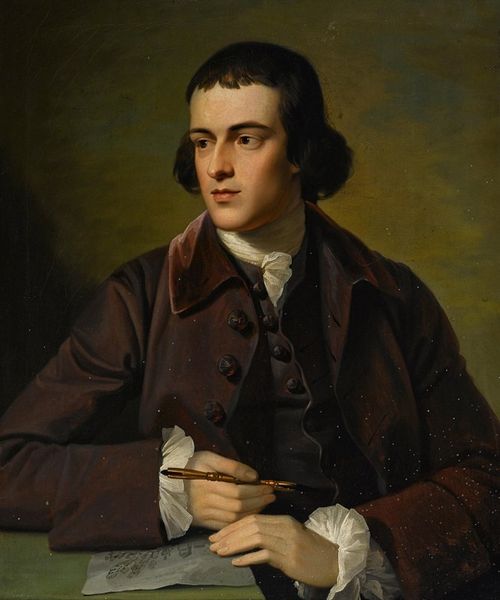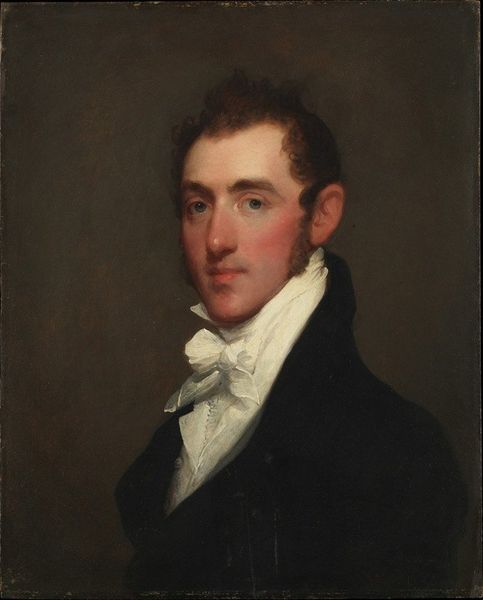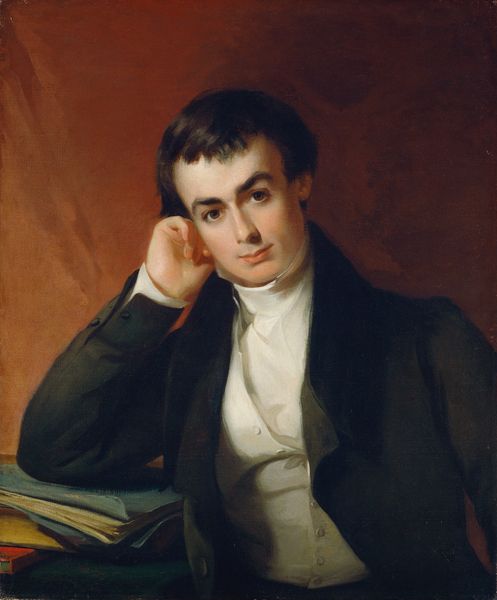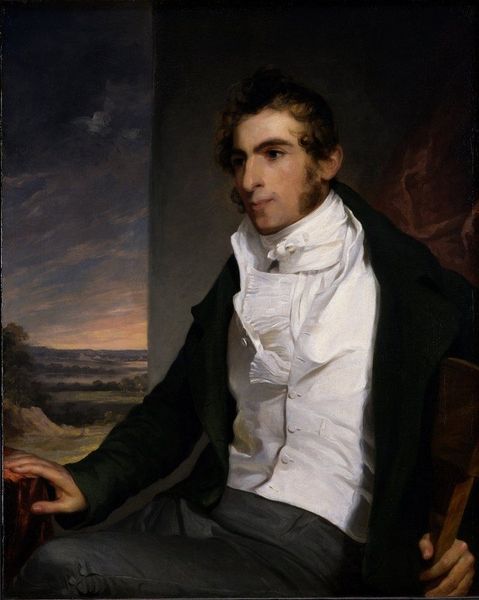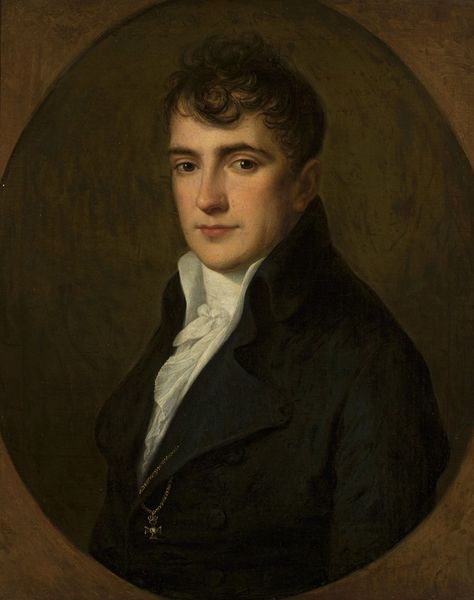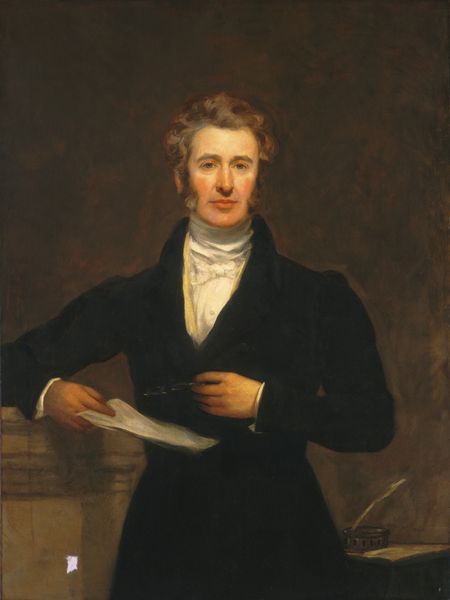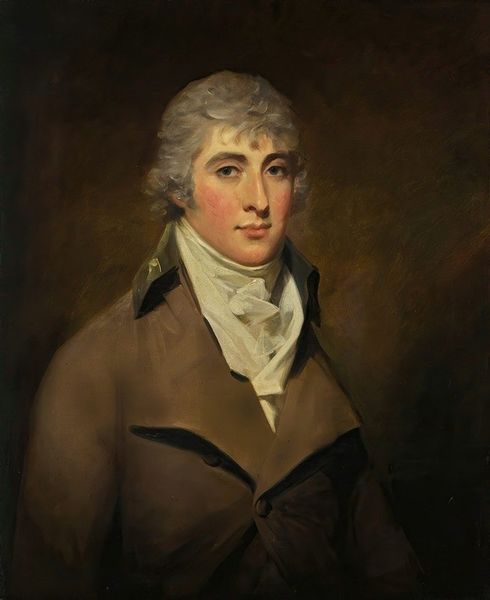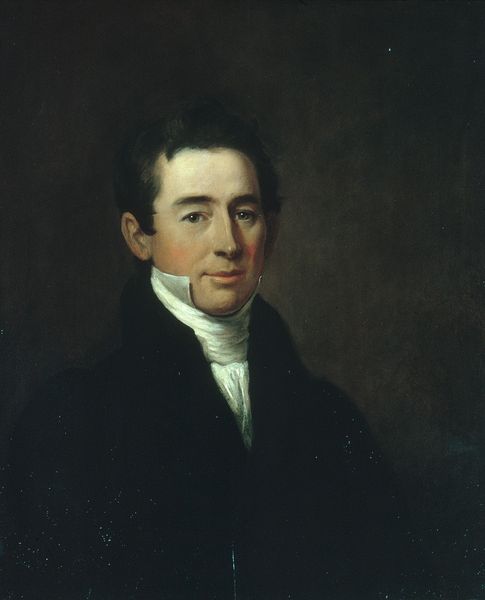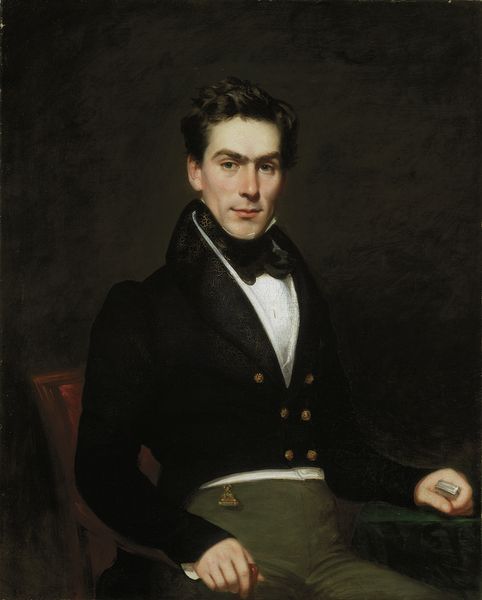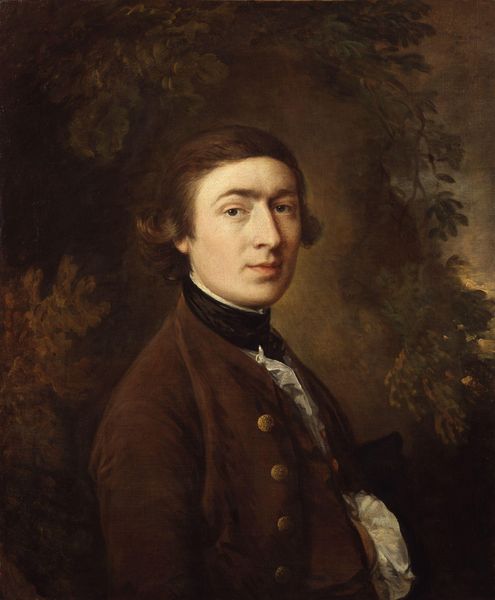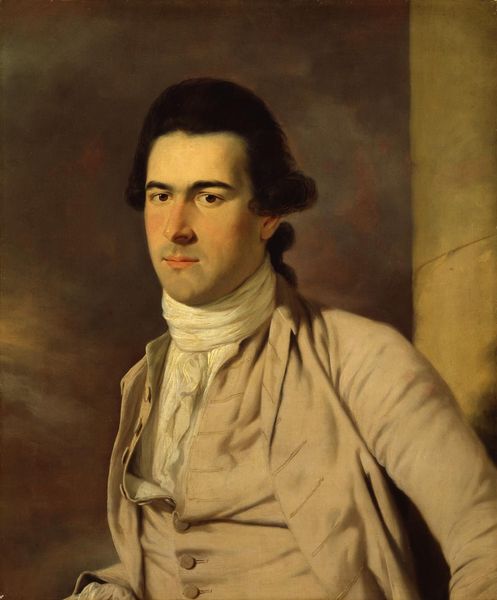
oil-paint
#
portrait
#
figurative
#
portrait
#
oil-paint
#
portrait reference
#
portrait head and shoulder
#
romanticism
#
animal drawing portrait
#
portrait drawing
#
facial portrait
#
academic-art
#
portrait art
#
fine art portrait
#
celebrity portrait
#
digital portrait
Copyright: Public Domain: Artvee
Editor: Here we have Thomas Sully’s oil painting, "William Alston, Class of 1825," created in, well, 1825. It's a pretty standard portrait in some ways, but something about his expression feels so knowing, like he carries a secret. What do you see in this piece, looking beyond just the surface of a portrait? Curator: It is in his eyes, isn’t it? Portraits are rarely just documentation. Look at how Sully uses light and shadow – the dramatic chiaroscuro. Light often signifies knowledge or divine favor, doesn’t it? So what message does that send in context of a collegiate portrait of this era? This isn't simply about recording his likeness; it’s about suggesting his potential, his future. Editor: So, he’s almost a symbol *of* potential? Like, a representation of what an educated man could become? Curator: Precisely. Think about the other symbols present. That high, white collar suggests status and the clothing speaks of academia. Together they project societal expectations onto Alston, linking personal identity to the collective aspirations of his class and the institution. The portrait subtly conveys an encoded narrative of societal expectation. What continuities and ruptures from our visual communication conventions today do you detect? Editor: Hmm, that's interesting. I guess now we are hyper-aware of individual identity… I'm stuck thinking about that encoded narrative and its continued existence. It's definitely food for thought. Thanks! Curator: Indeed. A portrait becomes more than a face; it's a mirror reflecting our ever-evolving cultural landscape.
Comments
No comments
Be the first to comment and join the conversation on the ultimate creative platform.

